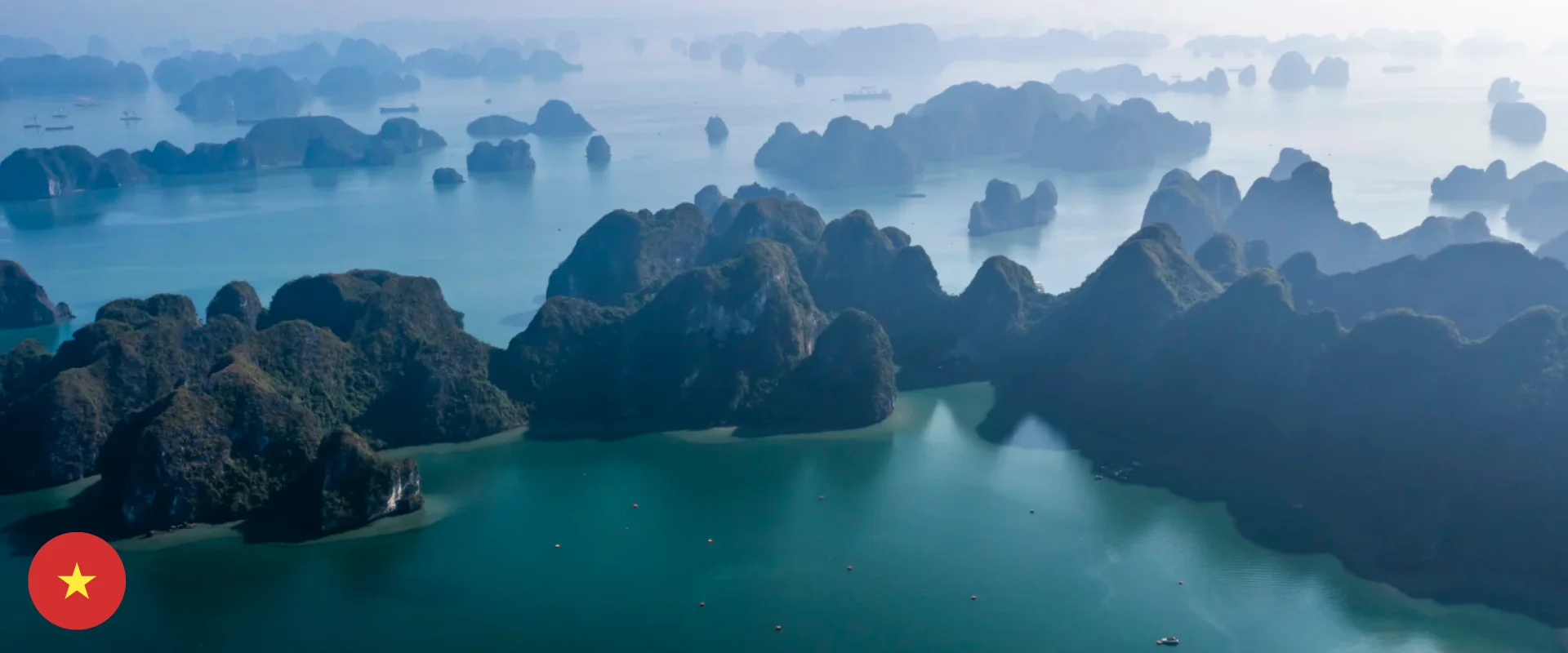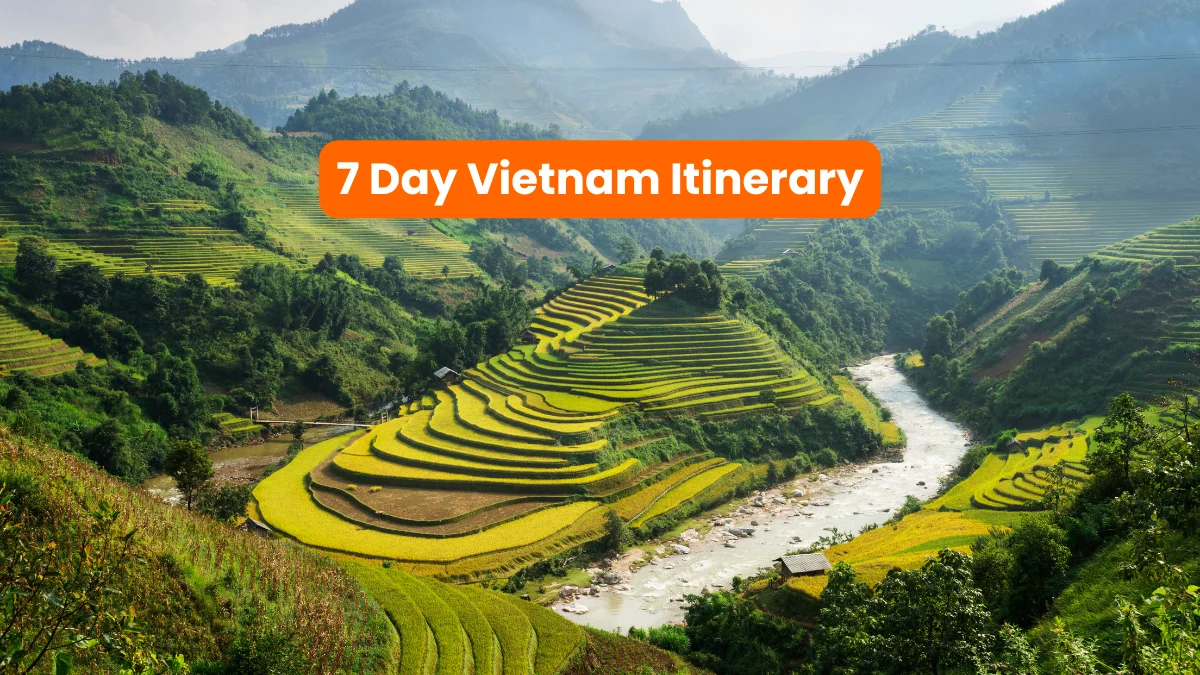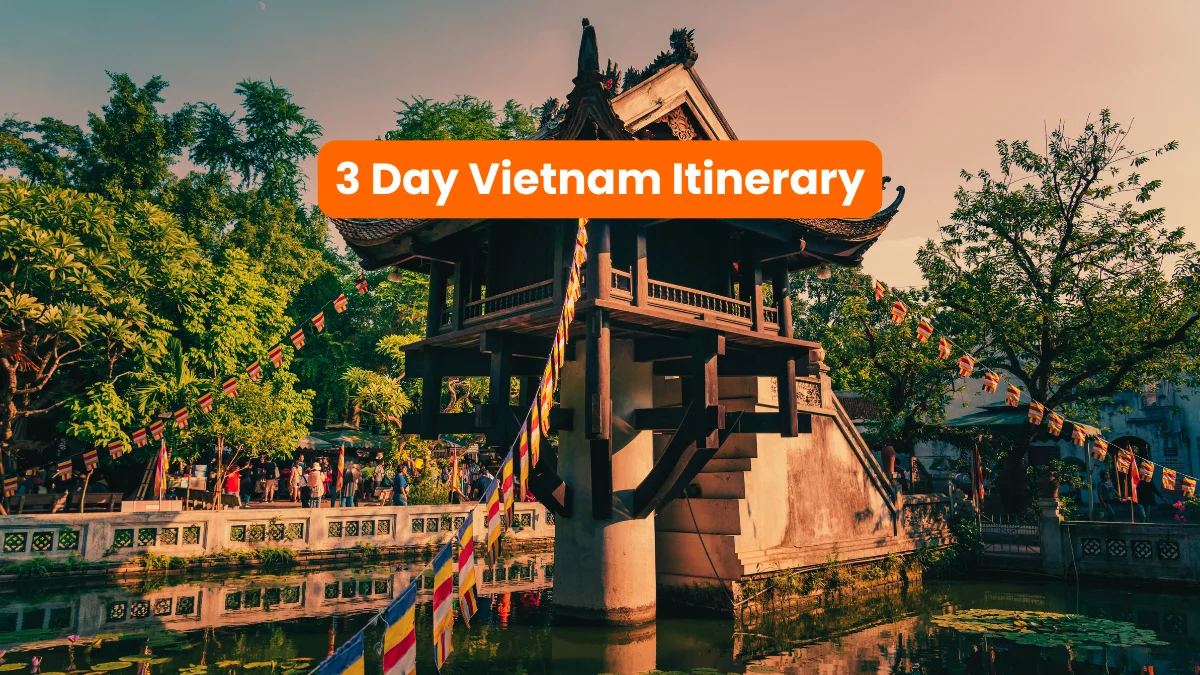Vietnam’s culinary joys mirror the extravagant beauty painted across its diverse landscapes. From the northern mountains’ alluring terraces, the central historical allure, to the southern delta’s watery pathways, each region unfolds its unique panoramic vistas. These are not mere visual feasts but gateways into the cultural, historical, and ecological treasures tucked away in Vietnam’s untouched beauty, promising to enthrall those who seek nature’s serenity.
Mountains and rice terraces in the north
Northern Vietnam is a masterpiece of nature’s artistry, encompassing verdant mountains and terraces that echo tranquility and timelessness. The region’s landscape, particularly around Sapa, weaves an intricate network of hillside terraced rice fields that transform through seasons into picturesque layers of green and gold.
Sapa is a glorious canvas where nature unfurls its artful symphony. Trekking through these terrains provides visitors not just breathtaking vistas but an intimate peek into the vibrant cultural tapestry of ethnic minorities like the H’mong and Dao. These treks are a unique blend of spectacular nature and rich cultural interaction, inviting you into the lives of villagers who call these mountains home.
Similarly, regions like Ha Giang command attention with dramatic karst formations, steep ridges and curves framed against fertile green valleys. Exploring Dong Van Karst Plateau reveals the terraced beauty against a backdrop illuminated by nature’s grandeur, making emotional recounts through every captured moment.
Venturing into Pu Luong Nature Reserve offers a more secluded experience, where serene landscapes offer eco-friendly accommodations coupled with trails amidst lush jungles and cascading waterfalls. This retreat provides an alluring escape, engaging with locals and delving deep into the tranquil embrace of Northern Vietnam’s natural charm.
Central coast and historical towns
Central Vietnam boasts an engaging blend of historical intrigue and coastal beauty, beautifully juxtaposed within towns like Hue, Da Nang, and Hoi An. Each location holds a distinctive allure, reflecting both the historical gravitas and natural beauty that defines Vietnam.
Hue, a former imperial capital, unfolds the remnants of regal dynasties with its Imperial City and royal tombs. Nestled beside the Perfume River, Hue is a destination for cultural historians eager to traverse its storied World Heritage landscapes. Its palatial architecture stands in solemn reflection of Vietnam’s historical depth and its captivating charm.
Hoi An, another World Heritage site, is a postcard picture of well-preserved, ancient architecture intertwined with glowing lanterns and vibrant alleys. With its charming riverside setting, it offers an idyllic sightseeing experience, where architecture, artistry, and culinary adventures walk hand-in-hand, delivering plentiful experiences in both leisure and exploration.
The Marble Mountains near Da Nang add geological curiosity to the cultural and natural repertoire, offering enthralling exploration through their cavernous passages. These limestone outcrops enrich the coastal backdrop, promoting a sense of adventure amidst scenic vistas.
This central region encapsulates the tranquility of beaches and the mystique of cultural history, capturing travelers with its delightful fusion of the past and lush Vietnamese beauty.
Mekong Delta and floating life in the south
The Mekong Delta presents a watery landscape bustling with life, often dubbed as the “Rice Bowl” of Vietnam. This region stands as a picturesque puzzle of rivers, canals, and islands, interwoven with vibrant communities who thrive within and alongside these nourished lands.
Life in the Mekong Delta flows seamlessly with the rivers that nourish it. From bustling floating markets like Cai Rang, filled with raucous bargaining and animated vendor activities, to serene boat rides through twisted canals, the delta weaves together a tapestry of cultural navigation. Here, daily life rolls into unique rhythms dictated by waterways, as homes and businesses adapt to their aquatic environment.
Floating homes, schools, and markets create an intriguing vision of community resilience deeply rooted in their land, offering travelers a rare glimpse into a world where tradition meets innovation along gently lapping waters. The fertile strip of land is a tapestry of coconut groves, rice paddies, and orchards, adding both economic and visual richness to the region.
Engaging with the Mekong Delta’s floating world provides a distinctive view beyond traditional tourist experiences, where you partake in a living symphony of sights, scents, and sounds a testament to the life-giving rivers that shape the Vietnamese way of life.
National parks and hidden gems
Vietnam brims with immense natural beauty epitomized within its numerous national parks and hidden gems, offering ecological diversity and serene landscapes away from urban hustle. These green sanctuaries protect the country’s rich biodiversity, inviting avid nature enthusiasts to explore beyond the ordinary.
Phong Nha-Ke Bang National Park stands as a crown jewel, globally recognized for its breathtaking underground caves like the Son Doong Cave, the world’s largest. This park showcases mesmerizing geological offerings set against vibrant ecosystems, inviting adventurers for spelunking and jungle treks.
Cat Ba National Park provides refuge to endangered species like the white-headed langur amidst lush jungle backdrops, offering myriad hiking trails and karst landscapes at Ha Long Bay’s doorstep. With varied flora and fauna, Cat Ba presents an evocative natural palette, perfect for hiking and wildlife enthusiasts eager for a tranquil sojourn.
For a more serene escape, Ba Be National Park offers a landscape defined by lakes cradled within limestone mountains and fringed by lush forests. Here, boating, cycling, and village stays provide an exploratory encounter with an untouched environment, echoing both cultural richness and natural calm.
Navigating Vietnam’s national parks paints a vivid sketch of the country’s ecological wealth, a vista that enriches one’s connection to both land and its history, weaving environmental respect with tranquil retreat into a travel adventure within nature’s embrace.




